-
 Bitcoin
Bitcoin $78,748.0325
-5.87% -
 Ethereum
Ethereum $1,601.5786
-11.64% -
 Tether USDt
Tether USDt $0.9995
-0.01% -
 XRP
XRP $1.9278
-10.45% -
 BNB
BNB $563.2751
-4.91% -
 USDC
USDC $1.0002
0.02% -
 Solana
Solana $107.0570
-11.34% -
 Dogecoin
Dogecoin $0.1502
-11.43% -
 TRON
TRON $0.2316
-2.13% -
 Cardano
Cardano $0.5804
-11.15% -
 UNUS SED LEO
UNUS SED LEO $8.8730
-2.96% -
 Chainlink
Chainlink $11.4151
-11.57% -
 Toncoin
Toncoin $2.9503
-9.14% -
 Stellar
Stellar $0.2279
-10.05% -
 Shiba Inu
Shiba Inu $0.0...01147
-7.08% -
 Avalanche
Avalanche $16.2365
-8.51% -
 Sui
Sui $1.9405
-12.37% -
 Hedera
Hedera $0.1418
-12.64% -
 MANTRA
MANTRA $6.1017
-2.53% -
 Polkadot
Polkadot $3.6809
-7.16% -
 Bitcoin Cash
Bitcoin Cash $275.5230
-9.51% -
 Litecoin
Litecoin $70.9988
-14.40% -
 Dai
Dai $1.0002
0.00% -
 Ethena USDe
Ethena USDe $0.9989
-0.03% -
 Bitget Token
Bitget Token $4.1440
-7.11% -
 Pi
Pi $0.5972
-6.51% -
 Monero
Monero $200.6546
-6.35% -
 Hyperliquid
Hyperliquid $10.5782
-12.35% -
 Uniswap
Uniswap $5.1904
-11.74% -
 OKB
OKB $53.0659
0.93%
How does sharding technology in blockchain improve network performance?
Sharding improves blockchain performance by dividing the blockchain into smaller shards, enabling parallel transaction processing, reduced data storage needs per node, faster confirmation times, and increased network resilience.
Mar 01, 2025 at 03:36 pm
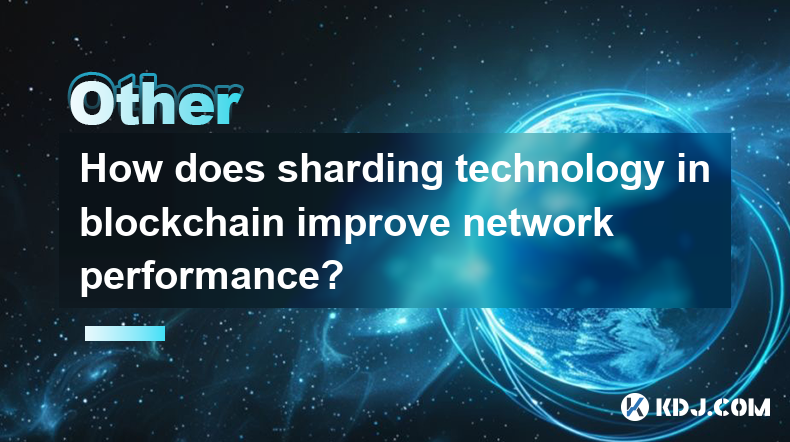
How Does Sharding Technology in Blockchain Improve Network Performance?
Key Points:
- Reduced Transaction Processing Load: Sharding divides the blockchain into smaller, more manageable pieces, distributing the processing load across multiple nodes. This significantly reduces the burden on individual nodes and allows for higher transaction throughput.
- Increased Scalability: By distributing the workload, sharding enables blockchains to handle a vastly larger number of transactions per second (TPS) compared to non-sharded systems. This increased scalability is crucial for widespread adoption and handling the demands of a growing user base.
- Enhanced Transaction Speed: With the processing load distributed, transaction confirmation times are drastically reduced. This leads to a faster and more efficient user experience, making the blockchain more appealing for various applications.
- Improved Network Efficiency: Sharding optimizes network resource utilization by reducing the amount of data each node needs to process and store. This results in lower bandwidth consumption and less energy expenditure, contributing to a more environmentally friendly and cost-effective blockchain.
- Increased Decentralization (Potential): While implementation varies, ideally, sharding can lead to a more decentralized network by enabling participation from a larger number of nodes without compromising security or performance. However, this depends on the specific sharding implementation and its ability to prevent centralization within shards.
How Sharding Technology Improves Network Performance:
- Data Partitioning and Parallel Processing:
Sharding fundamentally works by dividing the blockchain's data into smaller, independent subsets called "shards." Each shard is essentially a mini-blockchain containing a portion of the overall transaction history and state. This partitioning allows for parallel processing, meaning multiple shards can process transactions simultaneously. Imagine a large library being split into smaller sections, each managed by a different librarian. Instead of one librarian having to handle all requests, each librarian manages a specific section, significantly speeding up the process of retrieving books (transactions). This parallel processing drastically reduces the time it takes to process and validate transactions. The complexity of this process depends heavily on the sharding mechanism used. Some approaches prioritize simple data distribution, while others use more complex techniques to manage cross-shard interactions and data consistency. The method used for distributing transactions across shards is also critical, with load balancing algorithms often employed to ensure even distribution and prevent overload on specific shards. Finally, the mechanism for aggregating data from various shards back into a single, unified view of the blockchain is crucial to maintain data integrity and consistency across the entire system. Efficient and secure aggregation methods are paramount for the overall success of the sharding implementation.
- Reduced Data Storage Requirements:
Each node in a sharded blockchain only needs to store the data for the shards it is assigned to, rather than the entire blockchain. This significantly reduces the storage requirements for individual nodes. This is analogous to a library system where each librarian only needs to maintain their section of the library, rather than the entire collection. This reduction in storage requirements makes it easier for individuals with limited resources to participate in the network, promoting decentralization. The effectiveness of this reduction depends on the shard size and the distribution mechanism. Larger shards mean less storage space per node but potentially higher processing overhead. A well-designed sharding mechanism will find an optimal balance between storage requirements and processing capacity, ensuring that nodes can participate without requiring excessive resources. The network's efficiency also improves due to reduced data transfer during synchronization. With less data to transfer, the network becomes more resilient to bandwidth limitations, contributing to faster transaction confirmation times and increased overall network throughput. This reduction in storage demands also leads to energy savings, making sharded blockchains more environmentally sustainable.
- Enhanced Transaction Throughput:
Because transactions are processed in parallel across multiple shards, the overall transaction throughput of the blockchain is significantly increased. This is a direct consequence of the parallel processing capability. Instead of a single processing unit handling all transactions sequentially, multiple shards process transactions concurrently, resulting in a dramatic increase in the number of transactions processed per second (TPS). The improvement in TPS is directly proportional to the number of shards in the system, assuming efficient load balancing and minimal cross-shard communication overhead. However, achieving optimal throughput requires careful consideration of several factors. The size of each shard must be appropriately balanced to avoid bottlenecks, and the communication protocol between shards must be efficient to minimize delays. Furthermore, efficient consensus mechanisms are required within each shard to ensure the integrity and finality of transactions. The implementation of sharding must address these factors to ensure that the theoretical increase in TPS is realized in practice.
- Improved Latency and Faster Confirmation Times:
The reduction in processing load and parallel processing capabilities directly translate to faster transaction confirmation times. In a non-sharded blockchain, each node needs to process every transaction, leading to significant delays, especially as the network grows. With sharding, transactions are processed only by the nodes within the relevant shard, leading to significantly reduced latency. This results in faster confirmation times, providing a better user experience. The improvement in latency is particularly noticeable in applications requiring real-time transactions, such as decentralized finance (DeFi) applications. However, achieving low latency requires careful design and implementation of the sharding mechanism. Efficient communication protocols between shards are critical to minimize delays in cross-shard interactions. Moreover, the consensus mechanism used within each shard must be fast and efficient to ensure rapid transaction finality. The overall efficiency of the sharding implementation directly impacts the latency and confirmation times experienced by users.
- Increased Network Resilience and Fault Tolerance:
Sharding enhances the resilience and fault tolerance of the blockchain network. If one shard fails, the rest of the network can continue to operate without interruption. This is in contrast to a non-sharded blockchain where a single point of failure can bring down the entire system. This increased fault tolerance is a crucial factor in ensuring the reliability and availability of the blockchain. The level of fault tolerance depends on the specific implementation of sharding. A well-designed sharding mechanism will employ redundancy and replication techniques to ensure that data is not lost even if individual nodes or shards fail. Furthermore, the network's ability to recover from failures will depend on the speed and efficiency of the mechanisms used to restore data and re-establish consensus. A robust sharding implementation will provide a high degree of fault tolerance, making the blockchain more reliable and secure.
FAQs:
Q: What are the challenges of implementing sharding technology?
A: Implementing sharding is complex and presents several challenges. These include designing efficient cross-shard communication protocols to ensure data consistency across shards, developing secure and robust consensus mechanisms within each shard, and addressing potential security vulnerabilities that could arise from the increased complexity of the system. Furthermore, ensuring equitable distribution of resources and preventing shard centralization is crucial for maintaining a decentralized network. The complexity of the implementation necessitates rigorous testing and validation to ensure the stability and security of the sharded blockchain.
Q: How does sharding compare to other scaling solutions for blockchain?
A: Sharding is one of several scaling solutions for blockchain, each with its own advantages and disadvantages. Other solutions include layer-2 scaling solutions like state channels and sidechains, which offload transaction processing from the main blockchain. Compared to these, sharding offers the potential for greater scalability by distributing the workload across multiple shards, but it introduces complexities related to cross-shard communication and data consistency. The optimal scaling solution depends on the specific requirements of the blockchain and its applications.
Q: Will sharding solve all scalability problems in blockchain?
A: Sharding is a significant advancement in blockchain scalability, but it is not a silver bullet solution. While it addresses many scalability challenges, it introduces new complexities and potential vulnerabilities. Other factors, such as network bandwidth limitations and the efficiency of consensus mechanisms, also contribute to overall scalability. Therefore, a comprehensive approach combining sharding with other optimization techniques is often necessary to achieve optimal scalability. The success of sharding also depends heavily on its effective implementation and careful consideration of potential issues.
Q: What are some examples of blockchains using or planning to use sharding?
A: Several blockchain projects are exploring or implementing sharding technologies. While providing specific examples requires constantly updated research due to the rapidly evolving nature of the crypto space, you can research projects that explicitly mention sharding in their whitepapers or development updates. It's crucial to verify the claims and the stage of implementation for each project. Many projects discuss future sharding implementation, but the actual functionality may still be in development or testing phases.
Q: What are the security implications of sharding?
A: The security of a sharded blockchain depends on the robustness of the consensus mechanisms within each shard and the security of the cross-shard communication protocols. Potential security risks include attacks targeting individual shards, data inconsistency issues resulting from faulty communication between shards, and the possibility of vulnerabilities in the sharding implementation itself. A well-designed and carefully implemented sharding system will mitigate these risks, but thorough security audits and ongoing monitoring are crucial to ensure the system's security. The specific security considerations vary significantly depending on the sharding implementation chosen.
Disclaimer:info@kdj.com
The information provided is not trading advice. kdj.com does not assume any responsibility for any investments made based on the information provided in this article. Cryptocurrencies are highly volatile and it is highly recommended that you invest with caution after thorough research!
If you believe that the content used on this website infringes your copyright, please contact us immediately (info@kdj.com) and we will delete it promptly.
- AVAX Price Eyes Rebound To As High As $44
- 2025-04-07 09:15:12
- U.S. Representatives Zach Nunn (R-Iowa) and Jim Himes (D-Conn.) reintroduced a bill to help combat illicit finance and terrorist financing on digital asset platforms
- 2025-04-07 09:15:12
- Binance Coin (BNB) Price Prediction: Targeting $676 as Bears Consolidate Below $640
- 2025-04-07 09:10:13
- US Seizes $201400 in Cryptocurrency Linked to Hamas Financing
- 2025-04-07 09:10:13
- Grayscale Files a Proposal to List the Grayscale AVAX Trust as a Spot ETF
- 2025-04-07 09:05:13
- If you could swap any U.S. coin design with a historical figure or symbol not yet featured, what would it be and why?
- 2025-04-07 09:05:13
Related knowledge
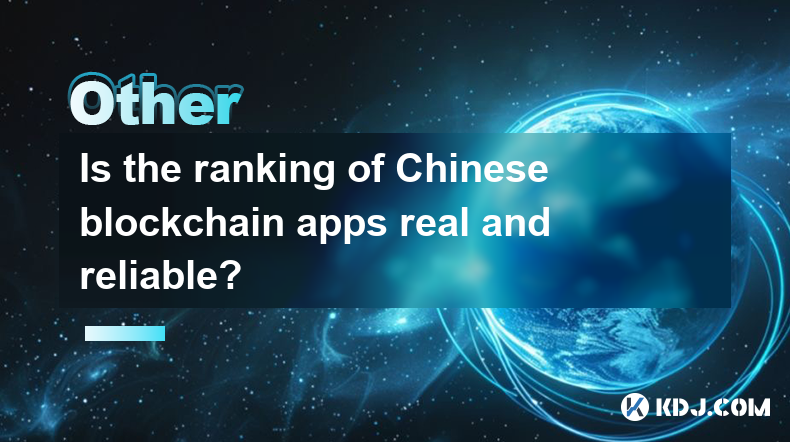
Is the ranking of Chinese blockchain apps real and reliable?
Apr 04,2025 at 09:01pm
The ranking of Chinese blockchain apps has become a topic of interest for many in the cryptocurrency community, as it provides insights into the popularity and adoption of blockchain technology within China. However, the reliability and authenticity of these rankings are often questioned. This article aims to delve into the factors that influence these ...
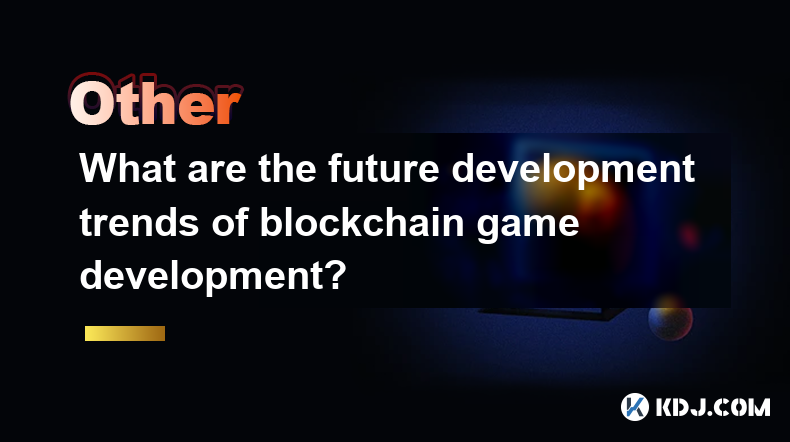
What are the future development trends of blockchain game development?
Apr 03,2025 at 05:00am
Blockchain technology has revolutionized various industries, and gaming is no exception. As we look to the future, several trends are set to shape the development of blockchain games. These trends not only promise to enhance the gaming experience but also to integrate blockchain technology more seamlessly into the gaming ecosystem. Let's explore these t...
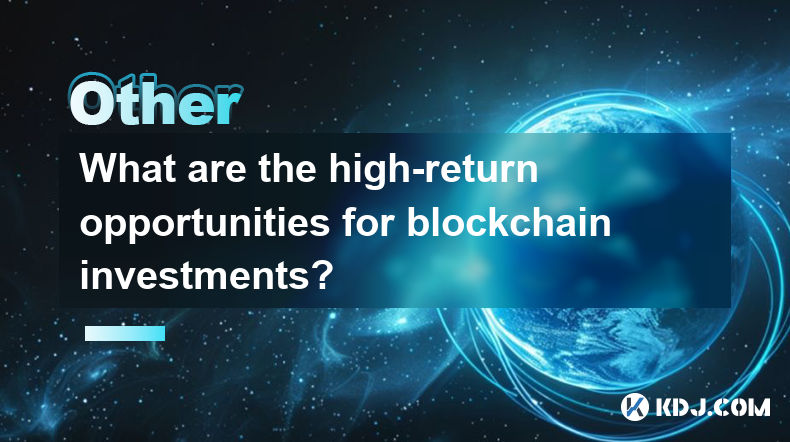
What are the high-return opportunities for blockchain investments?
Apr 05,2025 at 02:35pm
Blockchain technology has revolutionized the financial world, offering numerous high-return investment opportunities. These opportunities span various sectors within the cryptocurrency ecosystem, including cryptocurrencies, decentralized finance (DeFi), non-fungible tokens (NFTs), and blockchain startups. Each of these areas presents unique risks and re...
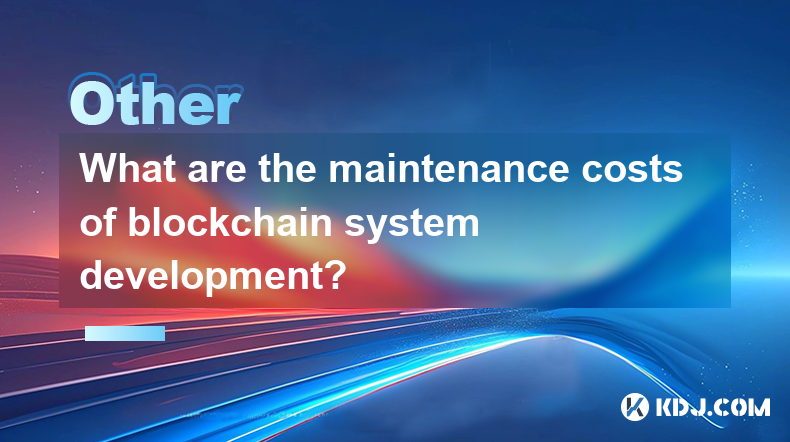
What are the maintenance costs of blockchain system development?
Apr 03,2025 at 06:07pm
The maintenance costs of blockchain system development are multifaceted and depend on various factors. These costs can include technical maintenance, security updates, infrastructure expenses, and personnel costs. Understanding these elements is crucial for anyone planning to develop or maintain a blockchain system. Technical MaintenanceTechnical mainte...
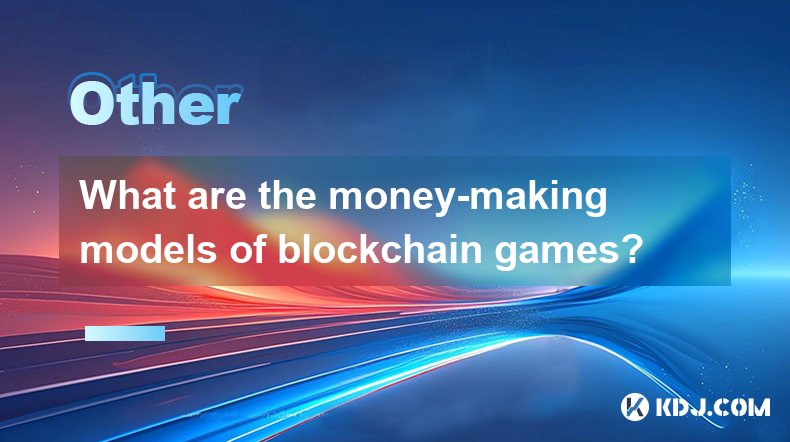
What are the money-making models of blockchain games?
Apr 04,2025 at 02:00pm
Blockchain games have emerged as a revolutionary way for players to earn real money while enjoying their favorite pastime. These games leverage the power of blockchain technology to create unique money-making models that benefit both the players and the developers. In this article, we will explore the various money-making models of blockchain games and ...
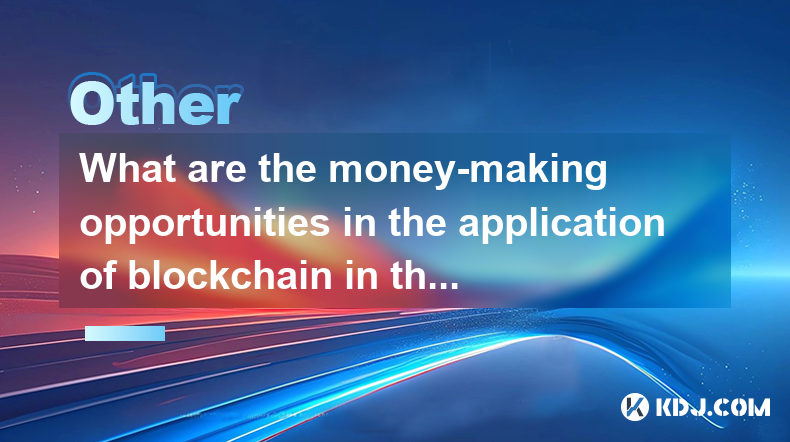
What are the money-making opportunities in the application of blockchain in the field of Internet of Things?
Apr 05,2025 at 10:35pm
The integration of blockchain technology with the Internet of Things (IoT) presents numerous money-making opportunities. Blockchain, with its decentralized and secure nature, can revolutionize how IoT devices interact, manage data, and conduct transactions. This article will explore various avenues where entrepreneurs, developers, and investors can capi...

Is the ranking of Chinese blockchain apps real and reliable?
Apr 04,2025 at 09:01pm
The ranking of Chinese blockchain apps has become a topic of interest for many in the cryptocurrency community, as it provides insights into the popularity and adoption of blockchain technology within China. However, the reliability and authenticity of these rankings are often questioned. This article aims to delve into the factors that influence these ...

What are the future development trends of blockchain game development?
Apr 03,2025 at 05:00am
Blockchain technology has revolutionized various industries, and gaming is no exception. As we look to the future, several trends are set to shape the development of blockchain games. These trends not only promise to enhance the gaming experience but also to integrate blockchain technology more seamlessly into the gaming ecosystem. Let's explore these t...

What are the high-return opportunities for blockchain investments?
Apr 05,2025 at 02:35pm
Blockchain technology has revolutionized the financial world, offering numerous high-return investment opportunities. These opportunities span various sectors within the cryptocurrency ecosystem, including cryptocurrencies, decentralized finance (DeFi), non-fungible tokens (NFTs), and blockchain startups. Each of these areas presents unique risks and re...

What are the maintenance costs of blockchain system development?
Apr 03,2025 at 06:07pm
The maintenance costs of blockchain system development are multifaceted and depend on various factors. These costs can include technical maintenance, security updates, infrastructure expenses, and personnel costs. Understanding these elements is crucial for anyone planning to develop or maintain a blockchain system. Technical MaintenanceTechnical mainte...

What are the money-making models of blockchain games?
Apr 04,2025 at 02:00pm
Blockchain games have emerged as a revolutionary way for players to earn real money while enjoying their favorite pastime. These games leverage the power of blockchain technology to create unique money-making models that benefit both the players and the developers. In this article, we will explore the various money-making models of blockchain games and ...

What are the money-making opportunities in the application of blockchain in the field of Internet of Things?
Apr 05,2025 at 10:35pm
The integration of blockchain technology with the Internet of Things (IoT) presents numerous money-making opportunities. Blockchain, with its decentralized and secure nature, can revolutionize how IoT devices interact, manage data, and conduct transactions. This article will explore various avenues where entrepreneurs, developers, and investors can capi...
See all articles





















































































